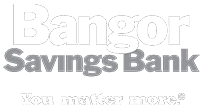
Have you have been overwhelmed with bills and made a personal vow to get rid of your credit card debt? In addition to 'snowball' and 'avalanche' debt repayment strategies, have you also considered debt consolidation? Although debt consolidation may make it easier to eliminate your debt, there are financial impacts that you should be aware of with this type of method.
Take caution before you sign up for a debt consolidation service. It is important to understand the types of debt consolidation solutions available and know what to choose if you decide to go this route to eliminate your debt.
Types of Debt Consolidation
Your first step is to choose a financial institution or company that can meet your particular debt consolidation needs. There are three main types of debt consolidation. These are personal loans, debt settlement, and balance transfer credit cards.
Personal Loans
When you consolidate your debt through a personal loan, you work with a lender, such as credit union or bank, to obtain a loan that equals the amount of your debt. You pay your debt off all at once with the loan and then start making one monthly payment to pay off your loan.
Debt Settlement
A debt settlement company works as a mediator between you and your creditors. They negotiate on your behalf and ask your creditors if they will accept a lower payment for the debt you owe. Recognize, you are asking a creditor to agree to terms other than those you agreed to when you received the credit. While this method may well assist you in managing your debt, it will have a negative impact on your credit score, as you will not be “paying as agreed.”
Balance Transfer Credit Cards
Some credit cards are considered debt consolidation solutions. These cards are still credit cards, but they offer you a 0% (or low) introductory APR offer to consolidate your other debt onto that single card, typically in exchange for a balance transfer fee that gets tacked onto your existing balance when you make the transfer.
A 0% introductory APR only means that when you first open up the balance transfer credit card, you are not charged interest on your balance, for a limited introductory period. Once approved for the card, you transfer your debt onto the card and do your best to pay as much of the balance as you can before the introductory period ends. Since there's no interest during this time, the money you pay goes towards your balance directly. Be fully aware of the fees charged with these offers that are typically a percentage of the debt being transferred. Additionally, recognize that opening one credit card after another can adversely affect your credit score, as it will lessen the “length of trade” contributing to your score. While this has less of an impact than paying your bills on time, closing out a particularly old credit card in favor of a new one for a balance transfer may have impact.
Things to Avoid
Some common traps to avoid when using a debt consolidation solution include:
Paying High Fees
Some companies charge very high fees for their services in the form of upfront or monthly costs. It is important that before you sign up with a debt consolidation service that you know what the exact charges are going to be.
Consolidating the Wrong Debt
Best to consolidate those credit cards with the highest interest rate or small balance loans that will eliminate a high payment, depending on your goal with the consolidation.
Although it is tempting to consolidate all your debt into one convenient monthly payment, be sure not to roll debts into a loan that has a higher rate than your existing debt. Consider consolidating higher interest rate debts into your loan first and pay your lower interest rate debts on your own for the most positive impact.
Staying Out of Debt
So, how do you stay on track and stay out of debt? Consider opening a "spending account" instead of purchasing on credit. The concept behind this is it increases your financial happiness and keeps you out of debt. Here are three simple steps on how to go about it:
- Open a money-market or savings account. This account is for funding your goals only. So, you will set aside a specific amount you want to put towards your goal. For instance, if you are planning a vacation and plan on spending around $4,000 on it, you may wish to transfer a few hundred a month into this account. If you are looking to buy a car that's worth $9,000, you can have a certain amount transferred into this account for that purpose.
- Automate the process. Pay yourself first! Have an automatic payment come out of your paycheck or checking account and transferred to your spending account. You can work with your employer on splitting your direct deposit into two separate accounts or have your bank or credit union automatically transfer funds from one account to another.
- Wait until you reach your funding goal before you spend. Throughout life, you are going to have endless expenses. You have to save for your car, emergencies, retirement, bills, mortgage or rent, and more. Why not make life a little more enjoyable by saving extra funds each paycheck that you can use for things you enjoy, whether it is traveling, a hobby, or something else. The key is to have money saved these expenses rather than funding them with debt.
Debt consolidation can be a good thing for your finances and can get you out of debt quicker than you normally would if you choose your plan and company wisely. Consider the type of loan you want, the debt you want to consolidate and steer clear of financial traps when working with this kind of strategy.
